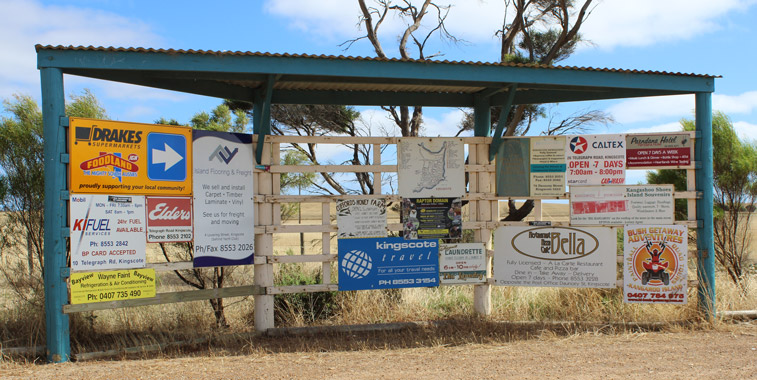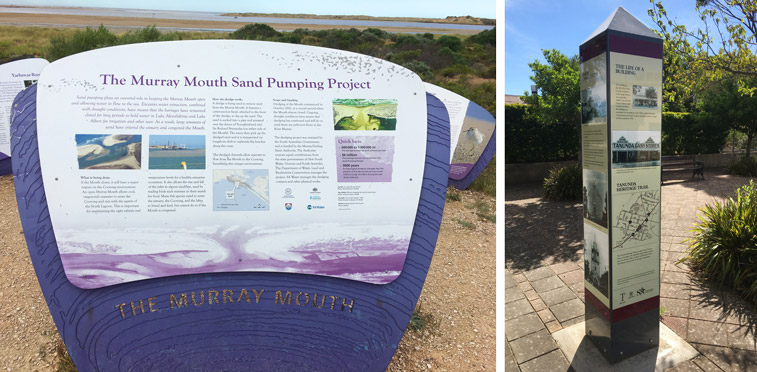Whenever we go on holidays – this time to South Australia – we are always interested in all types of signage. As visitors who don’t know a place, we have a totally different perspective to the people who plan and install the signs you use. We found so much of the important road signage to be obscured by trees and shrubs, which made some of our journey quite difficult.
And for the most part, the visitor information bays were woefully outdated and in need of replacement. Just one example on Kangaroo Island …

What is interpretation?
We spent a lot of time visiting attractions – such as parks and historic sites. This made us think a lot about how and what information to help us understand and enjoy the place. This is the called interpretation of information.
Interpretation involves translating ideas and concepts into a format that attracts, interests and inspires visitors. This can be through signage, brochures, displays, digital media, etc.
Benefits of good quality interpretation
Good quality interpretation has many benefits for people’s perceptions of the place and is a key plank in good tourism experiences. This can lead to repeat visitation and also positive endorsements (through word of mouth and social media sharing platforms). this is particularly important with sites like TripAdvisor where photos and comments can be posted instantly and shared with friends.

Key elements of effective interpretation
- Is meaningful to the audience and that they can relate to their life/experiences
- Provides novel, varied experiences and avoids repetition
- Content is organised with clear, easy to follow style and structure
- Has a clear theme that links the information
- Encourages visitor interaction and lets them take control of the experience
- Understands and respects the audience
Designing good quality interpretation
The best interpretation is developed from understanding the visitors’ perspective. Use the answers to the following questions as the basis for the design and planning of your interpretation.
“What would we want to know about if we were visiting this?”
“What questions would our visitors ask us if they could?”
“What will our visitors already know, and how can we build on this?”
Source: https://signage.business.uq.edu.au/signage-interpretation.html



